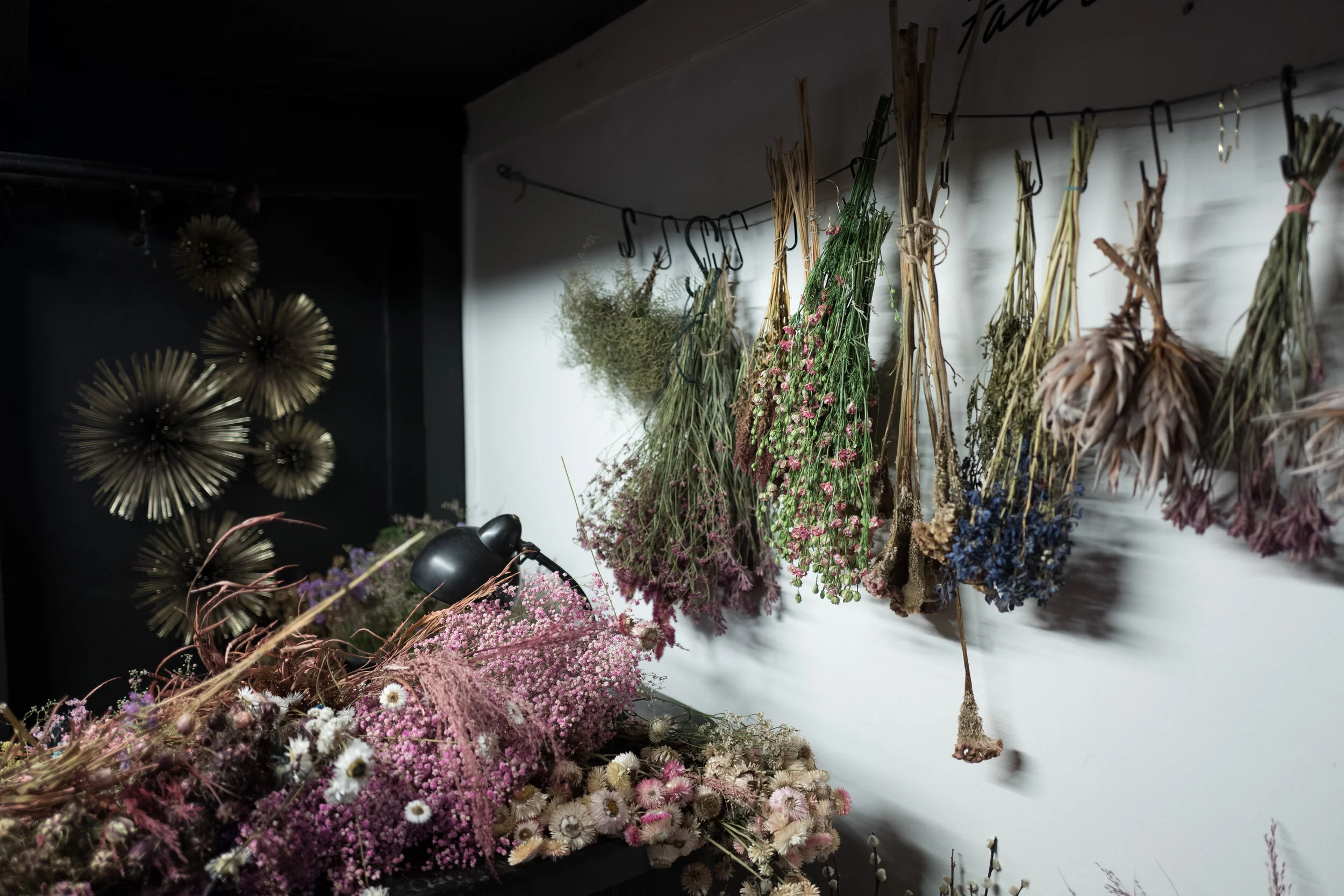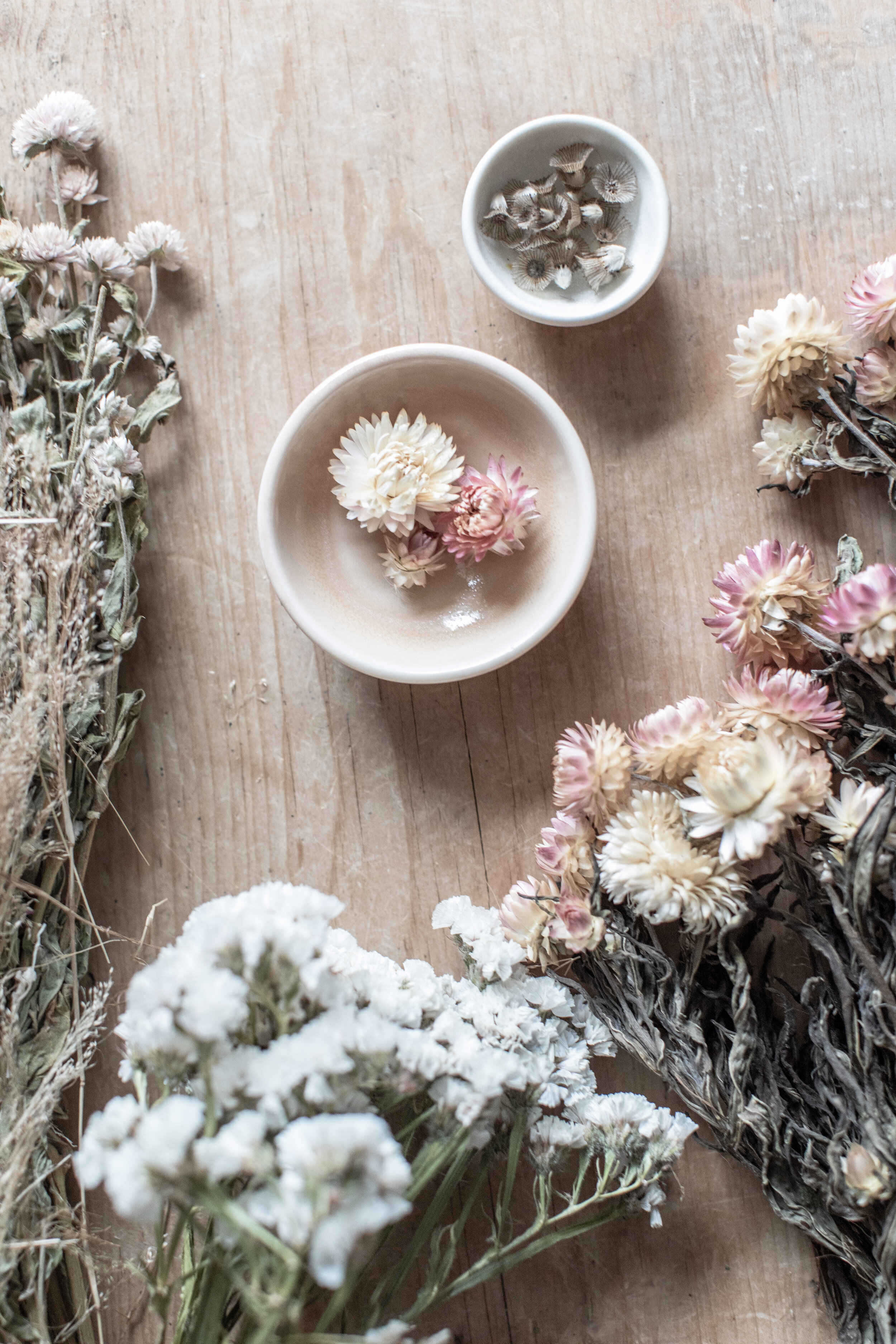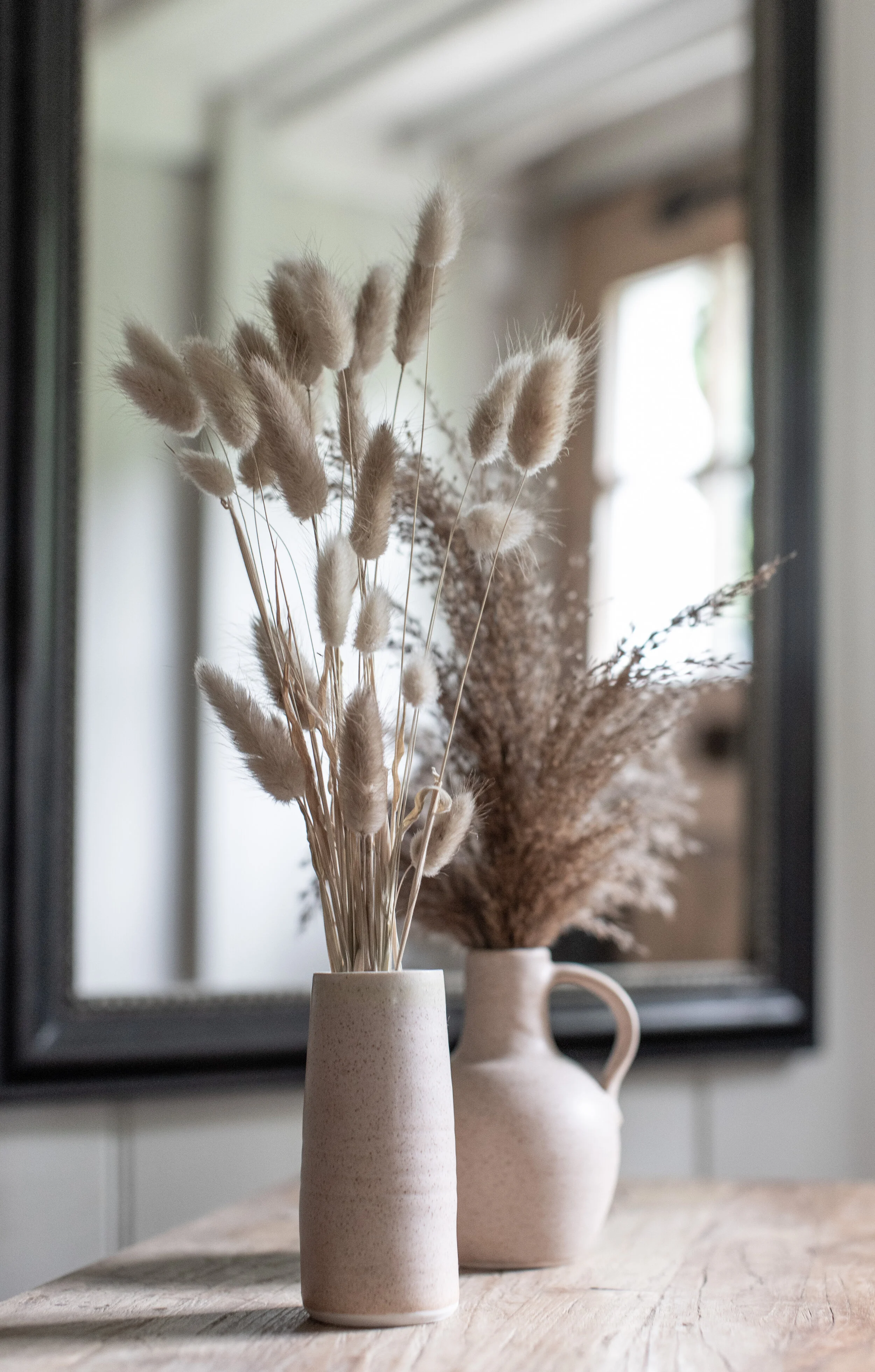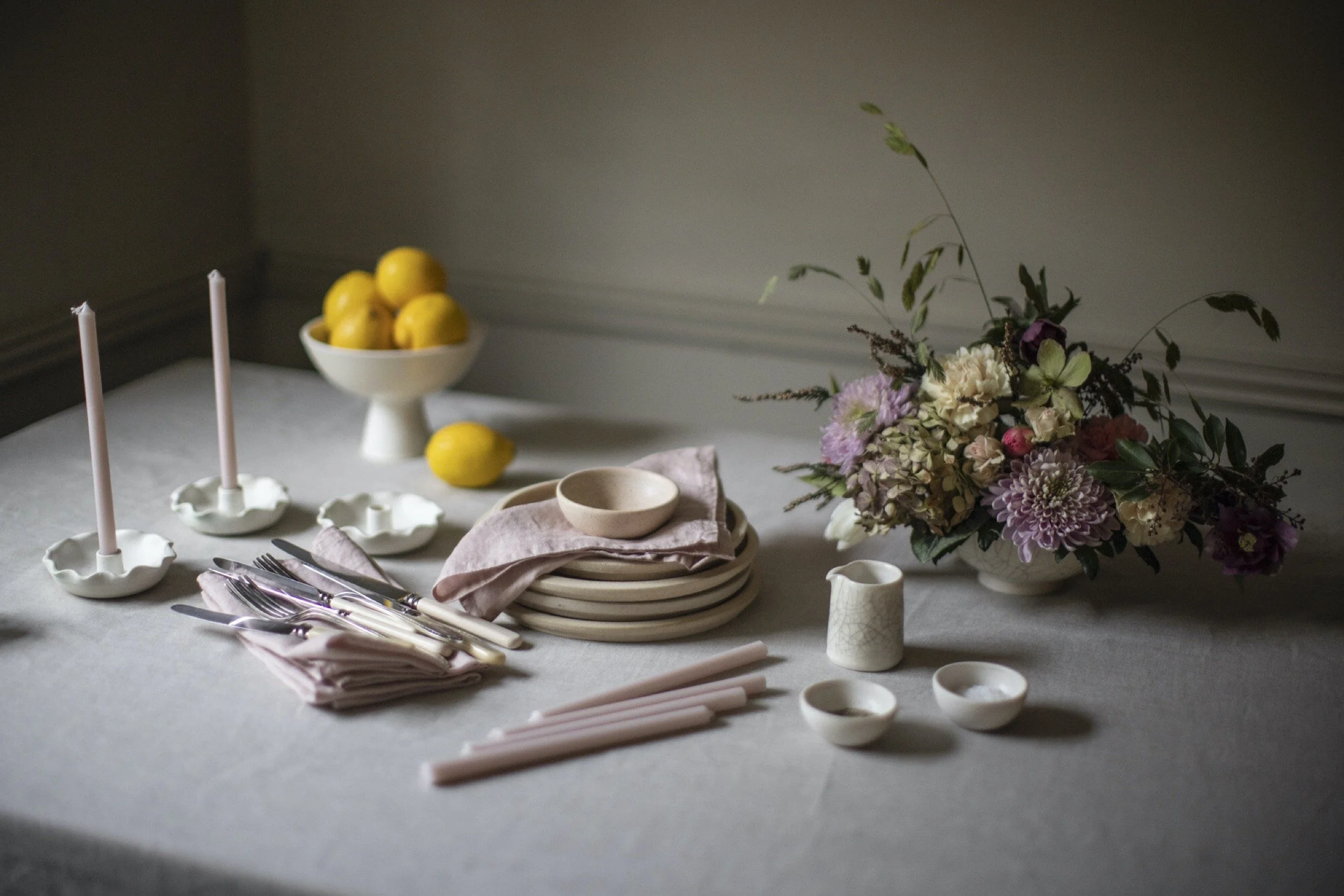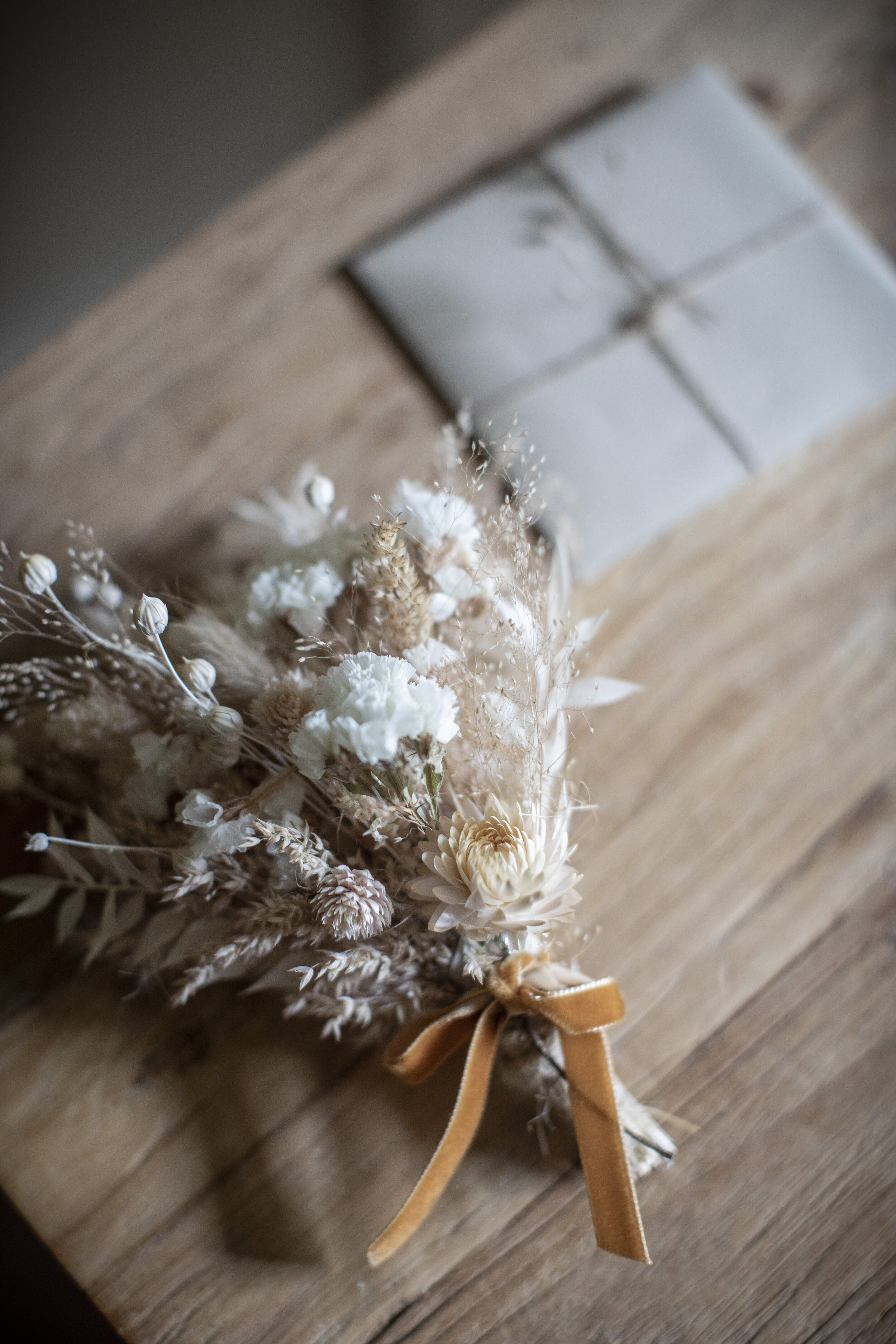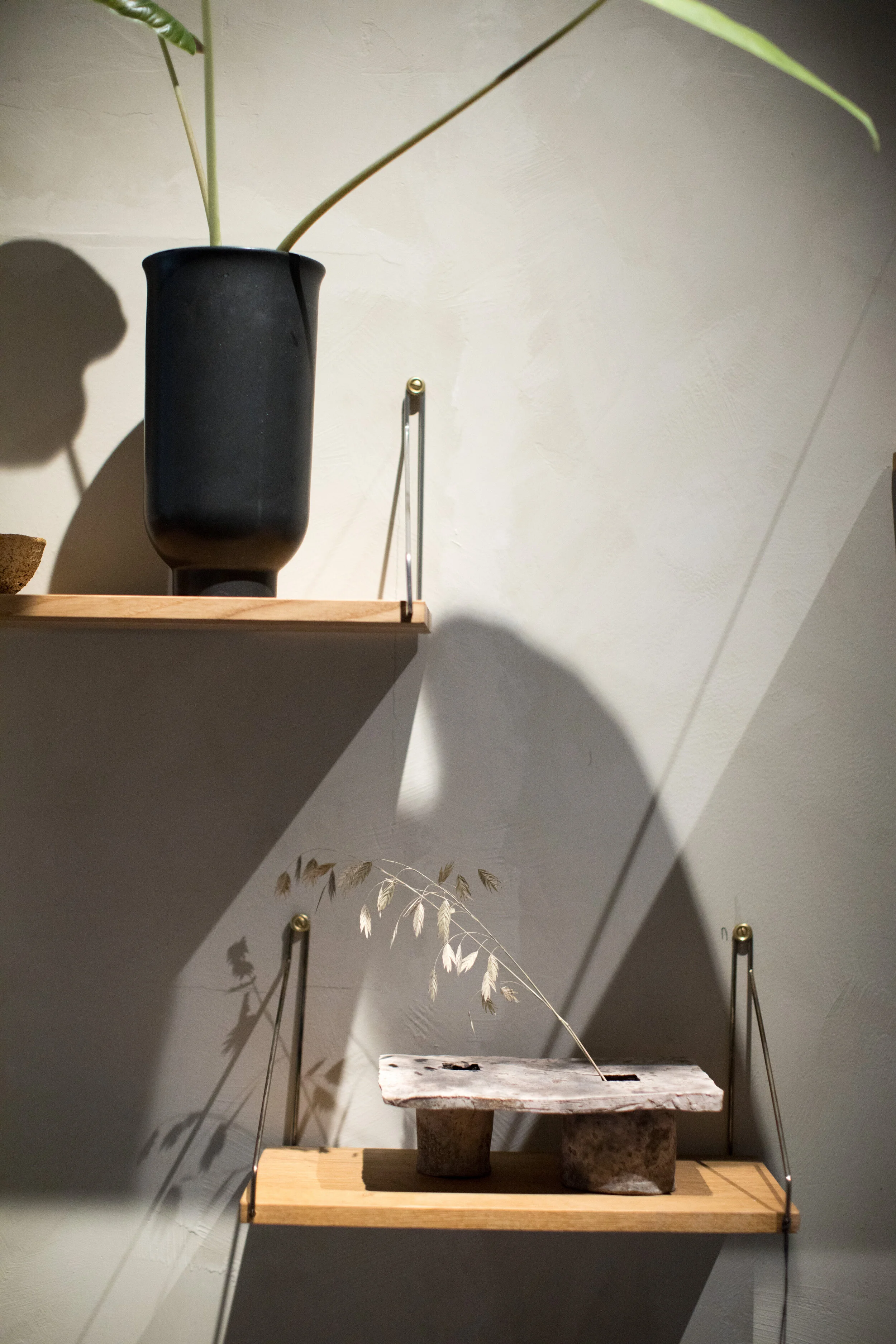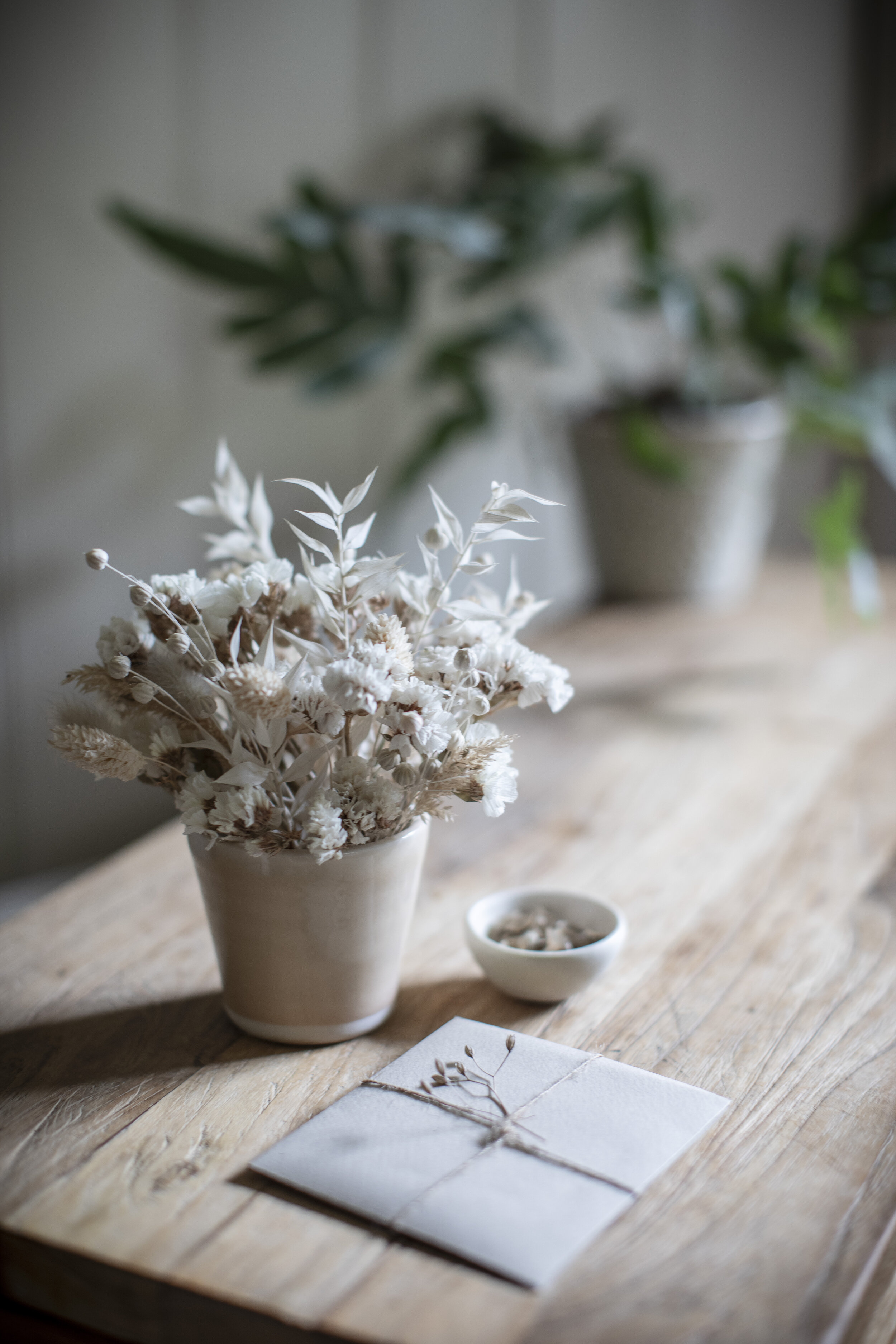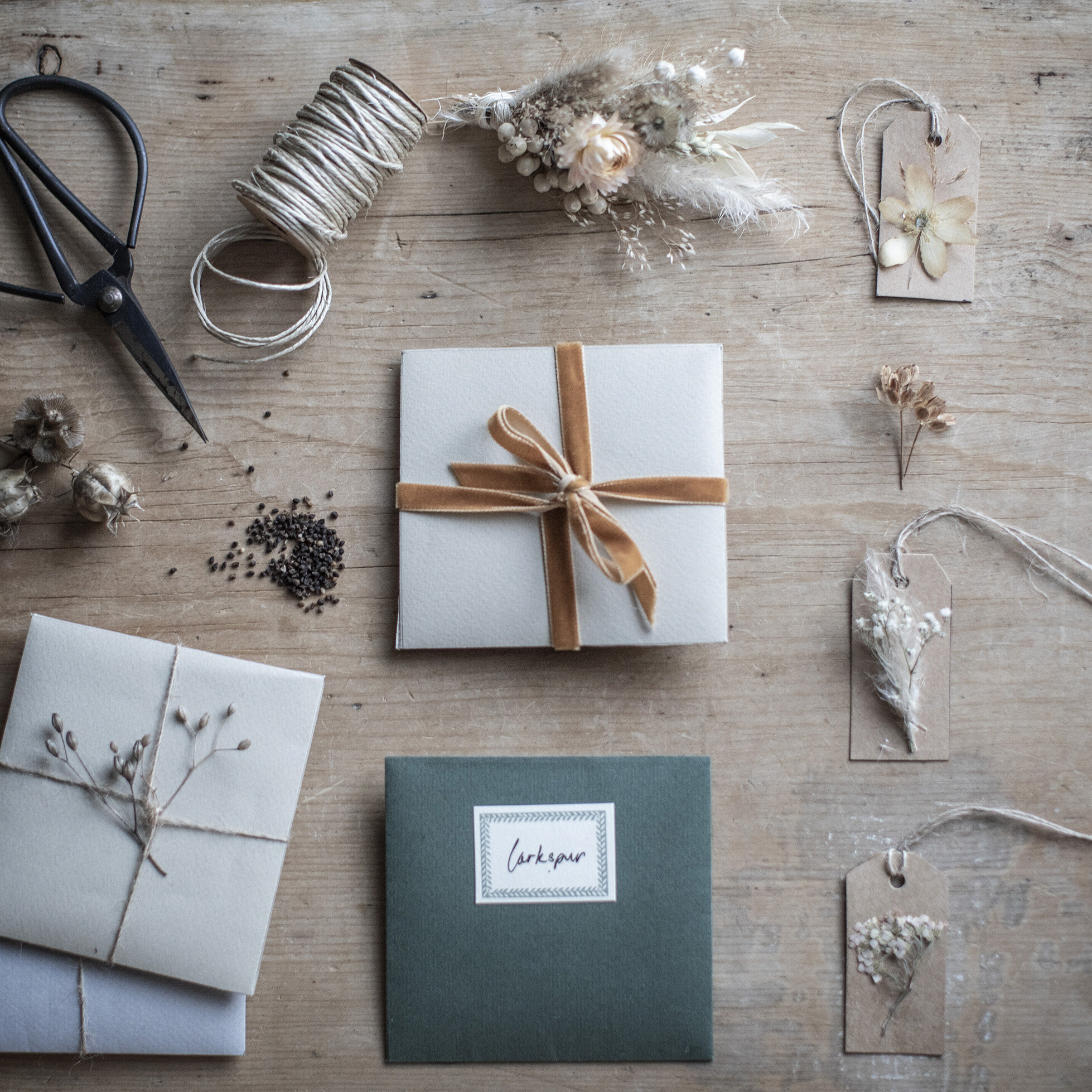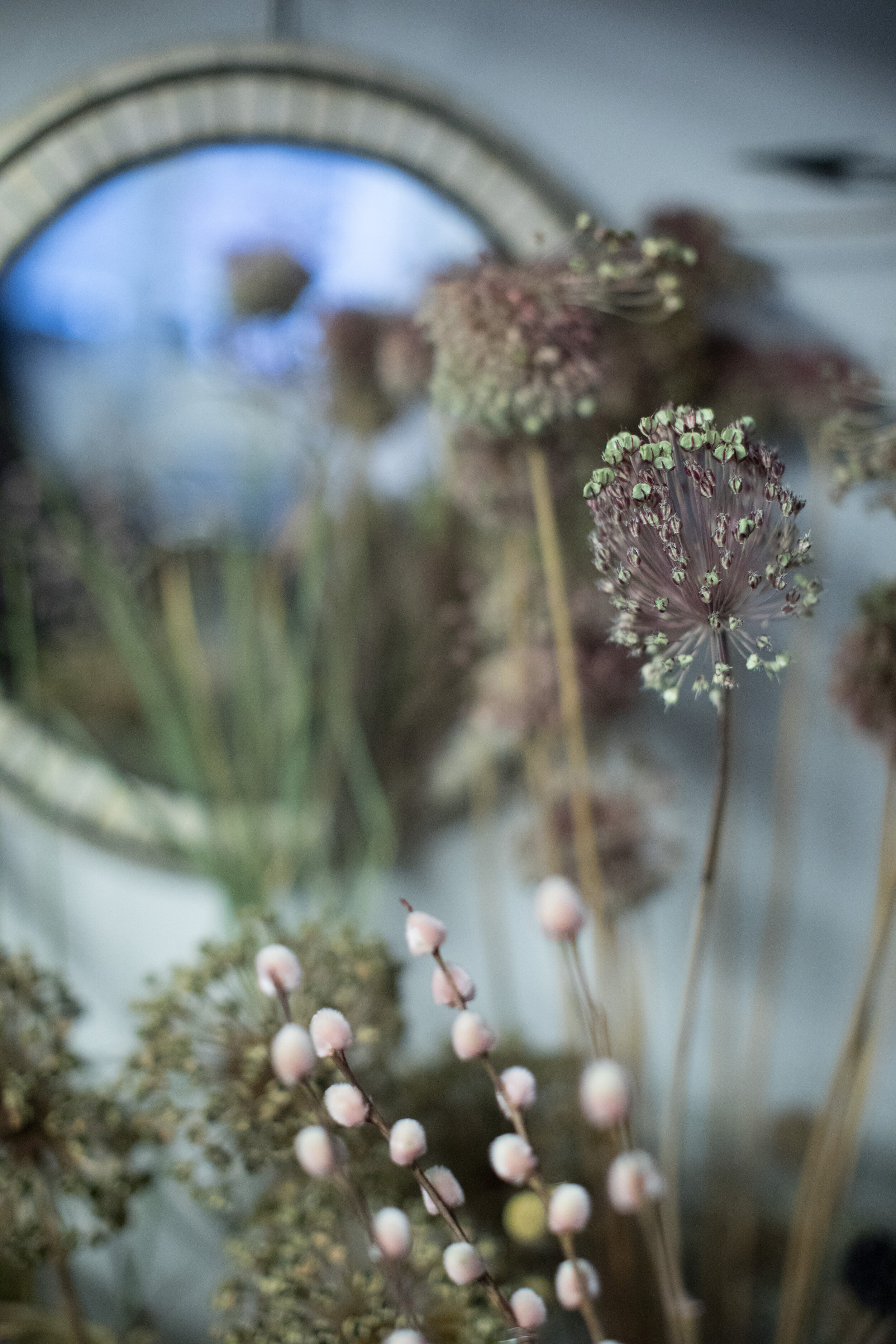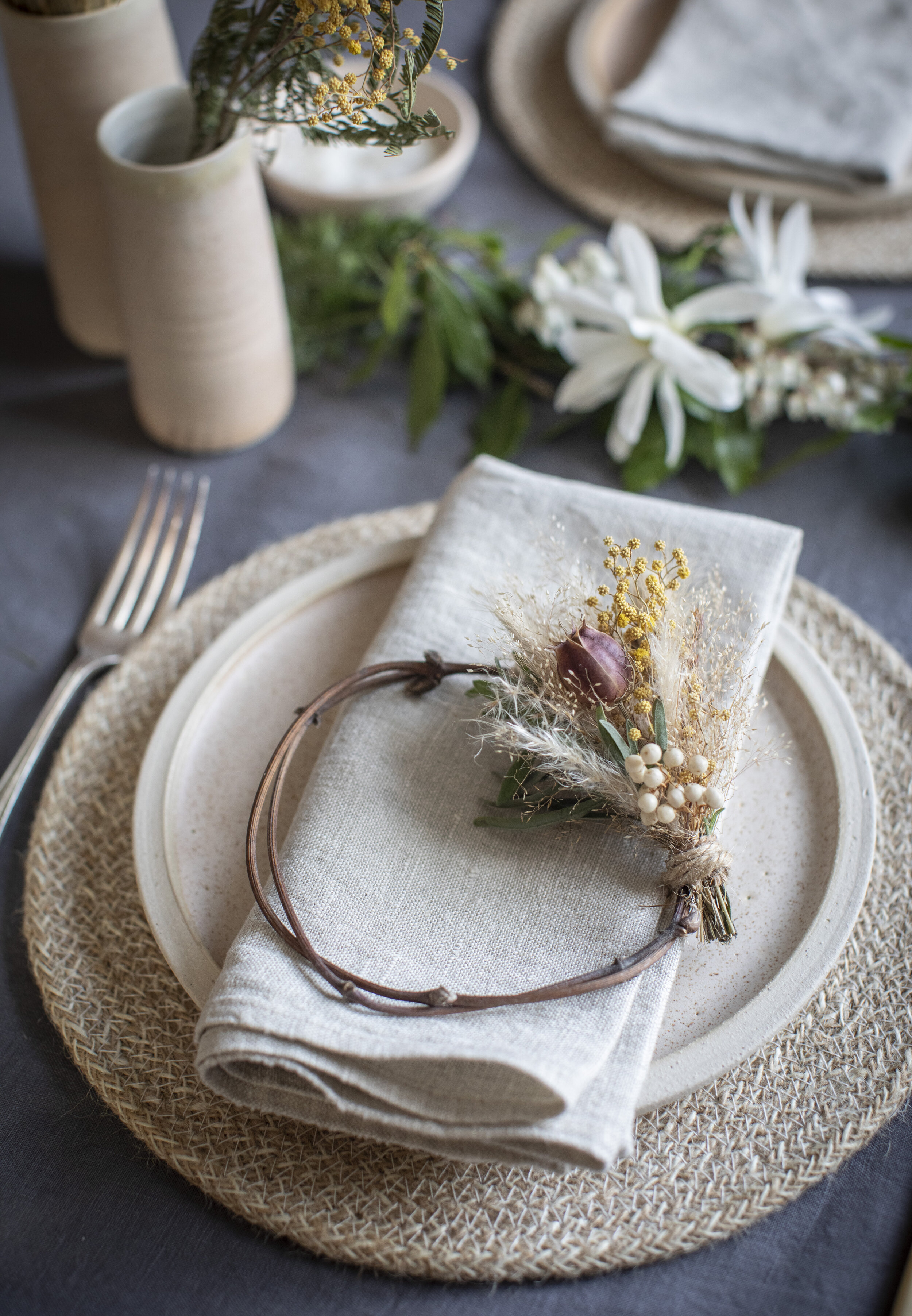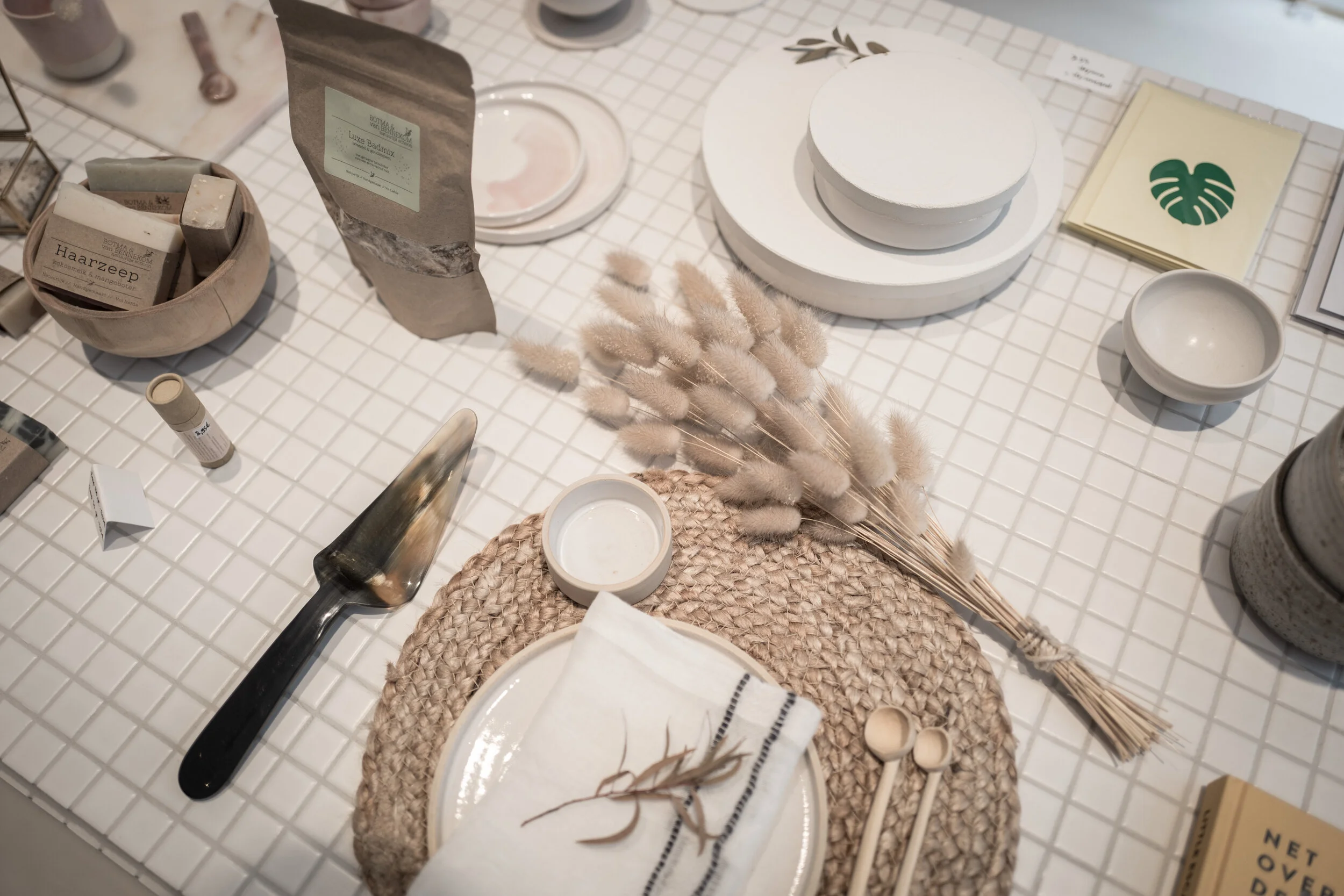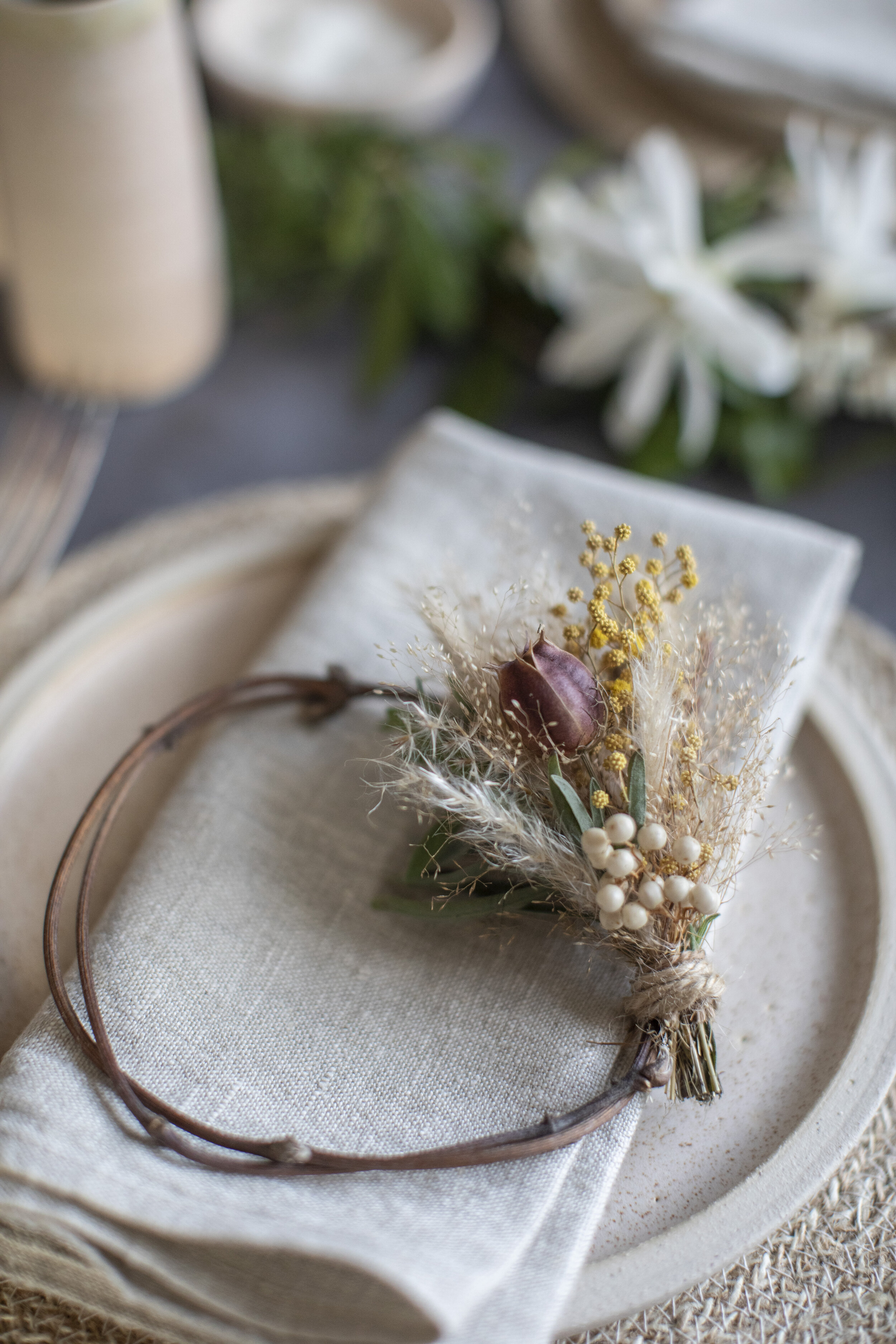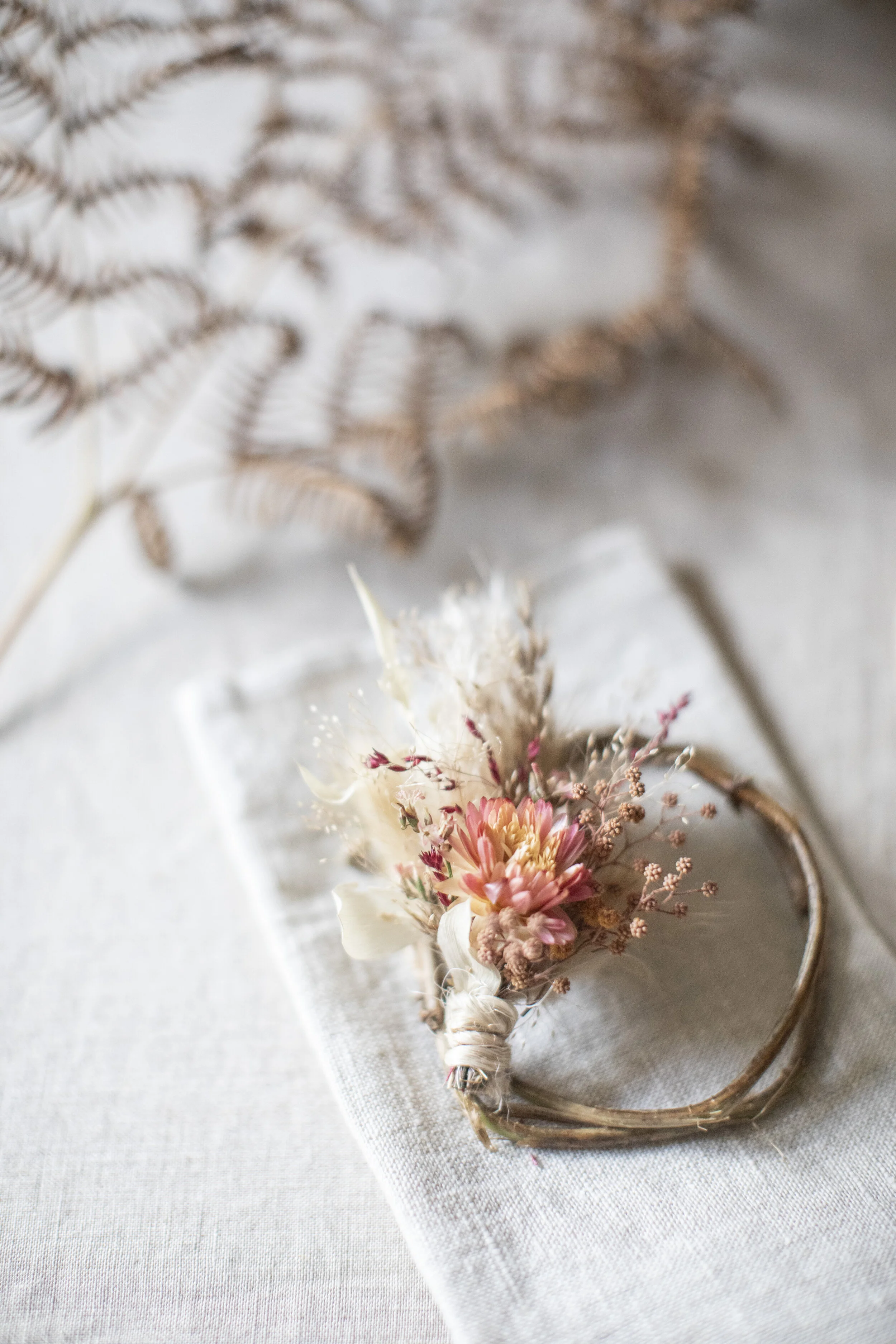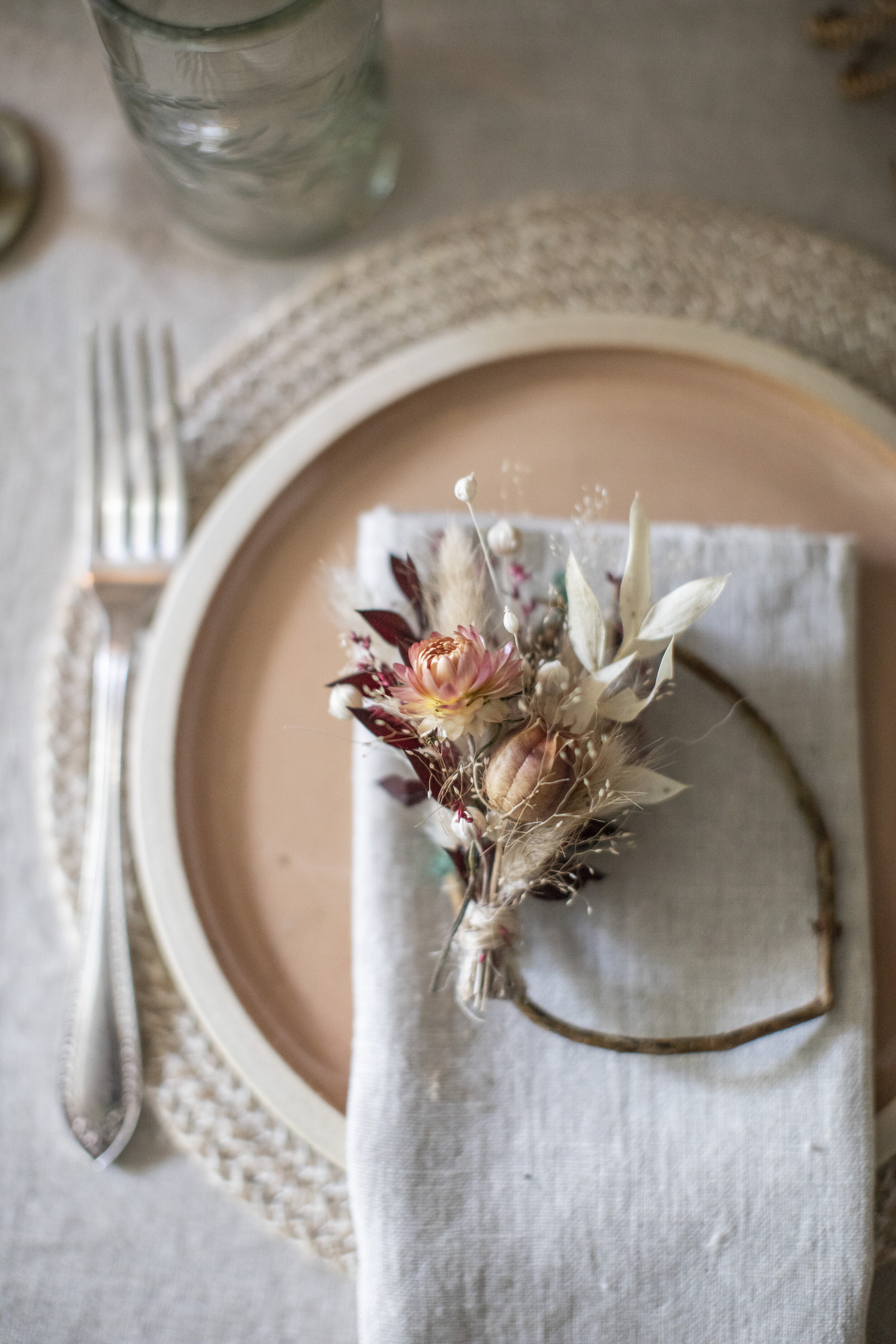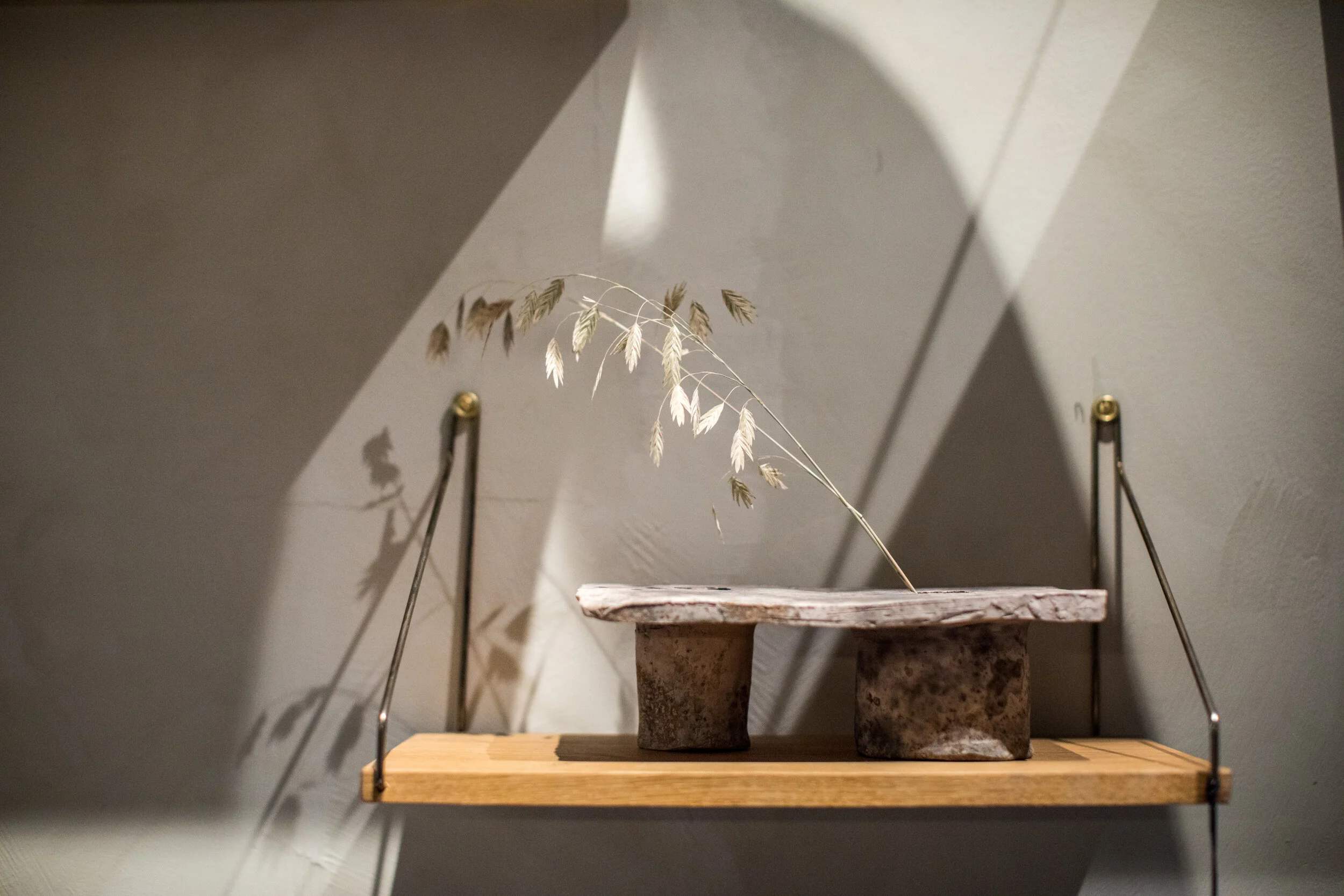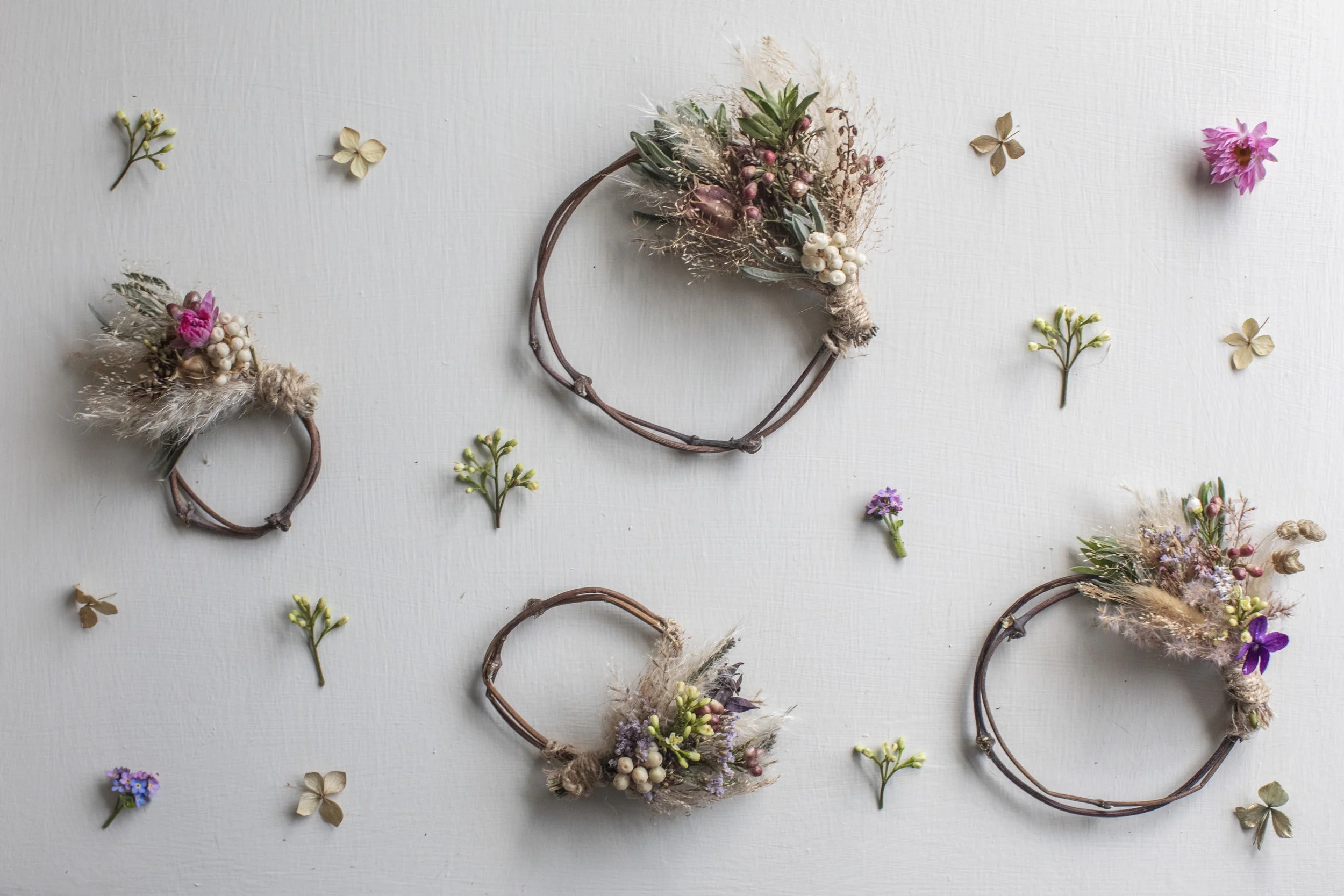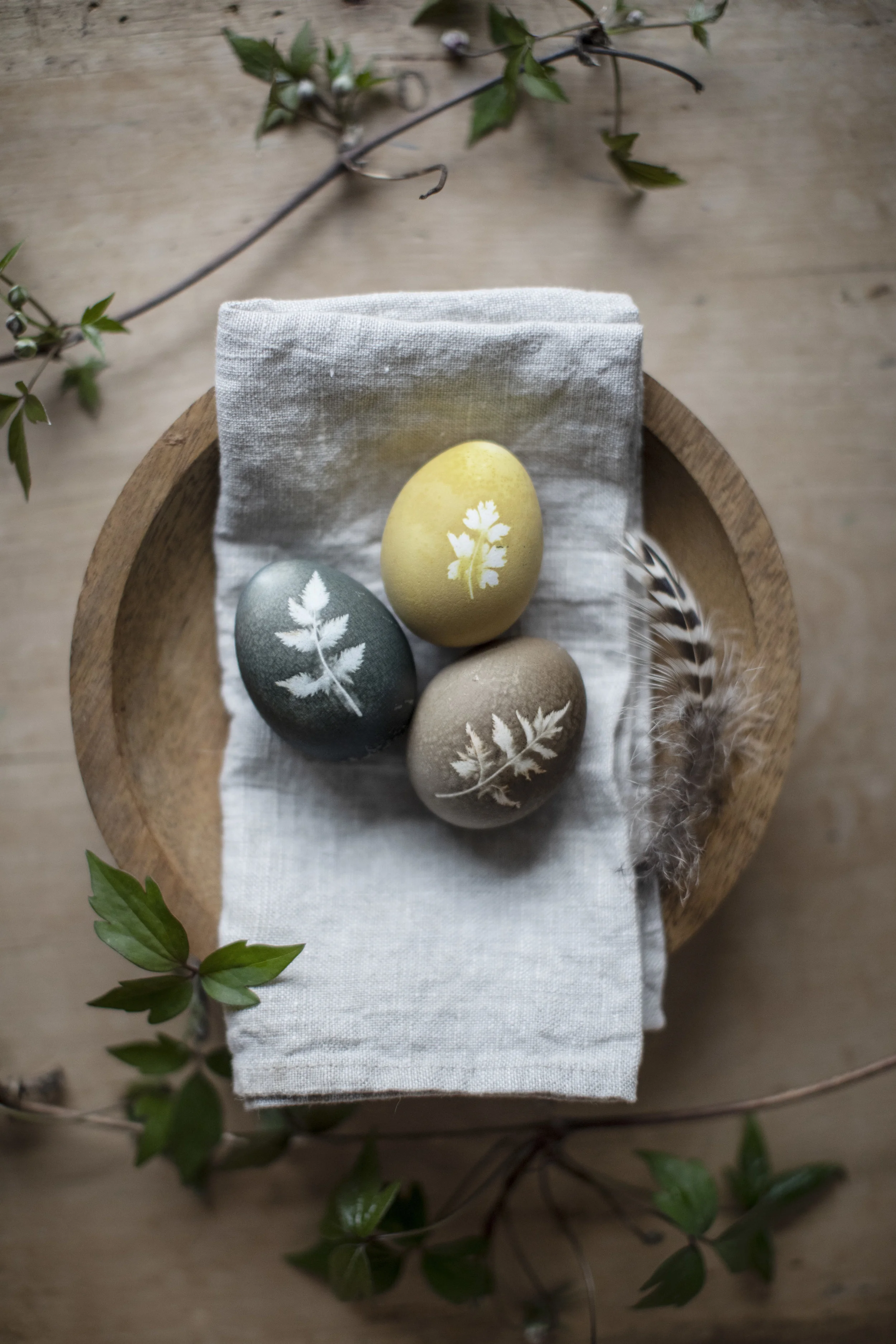How to Grow and Style Your Own Dried Flowers
It may feel counterintuitive to be going out into the garden at this time of year, but February is a great time for planning ahead. If you can face the cold (I find hand warmers or fingerless gloves help) this is the perfect time to tidy up your shed or greenhouse, sort through seeds and start thinking about the new plants that you might want to try for the coming year. I want to be ushered gently into the growing season (I’m still very much in hibernation mode) so I’ve started a notebook where I can write notes and draw out plans for my garden while I’m toasting my toes by the fire.
I’m determined to grow more plants from seed this year, and to increase my every-burgeoning collection of flowers and grasses that I can dry at the end of the season.
My house has been filled with everlasting dried flowers and grasses over the past few years. I go weak at the knees for anything feathery and fluffy, and I particularly like mixing dried grasses with fresh flowers (in summer as well as during the colder months).
Sign up to receive our quarterly seasonal Creative Living Journal and VIP access to our subscriber only secret sales.
There’s been a huge resurgence of interest in dried flowers and grasses of late. I found so many gorgeous examples on my travels in Ghent and Copenhagen a couple of summers ago, which gave me endless inspiration and ideas for making displays in my own home… Their recent popularity has meant that it’s getting easier to get your hands on some of the lesser known varieties.
SPRING EDIT
But they can be expensive, which is a good reason to start growing them yourself. I don’t have a big garden, but I’m all about growing and drying what I can. I’ve been experimenting with various varieties recently.
Grasses dry particularly well and work beautifully in winter or summer arrangements. The soft, delicate fronds of lagurus (bunny tails) need little introduction. A friend gave me a small plant from her garden last summer and it has seeded itself quite happily all over mine, often into improbably tiny spots. And if you don’t have a garden it’s as happy in a pot. Likewise briza (quaking) grass and its cousin briza maxima (giant quaking grass). I bought some seeds from the Higgledy Garden a couple of years ago and I now having healthy little plants cropping up all over my beds. Once they’re at full height, they quickly turn a gorgeous golden hue, signalling that they’re ready to cut and dry.
Of the flowers that I’ve grown and dried most successfully, statice has a special place in my heart. Partly because it reminds me of the bunches my mum used to have hanging to dry on the beam in our kitchen when I was growing up, but also for its ease and simple prettiness. I can even forgive its rather ugly green foliage (although I would suggest trying to hide it when thinking about your planting scheme). Thankfully it’s a lot nicer to look at once it’s been dried. Mine has been quite happy in a quite scrubby patch of my garden that’s full of stones.
Helychrysum is another plant that a friend gave me a cutting of that I now grow and have quite fallen for. It needs very little looking after and I find that the vibrancy of its deep pink and straw yellow flowers keep me going during the bleak and colourless winter months. I’ve had varying degrees of luck with scabiosa ping pong, which has a fairly plain, pale blue flower, but produces the most impressive geometric seed head. The trick is to catch them just before they go over, and not to let them get drenched in the rain. And make sure that they get plenty of light and don’t get overshadowed by larger, more vigorous plants. More consistently successful have been my nigella (love-in-a-mist) plants, that produce beautiful, pale bronze seed heads that rattle like miniature maracas. They’re great self-seeders, too.
I’ve decided to work in some new grasses into my planting scheme for this year, having seen some rather lovely dwarf pampas (cortaderia selloana Tiny Pampa) in the Hayloft catalogue that plopped on my door matt a few days ago. I’m also quite taken with the idea of incorporating some Stipa gigantea to my south facing bed, that’s filled with perennials nestling among the skimmia bushes and spheres of box come June. I love drama of the height they give and I’m confident they’ll sit perfectly alongside frothy clouds of ammi visnaga and majus. I also plan to experiment with some new poppy varieties because, as pretty as they are when in bloom, the rigid form of their seedheads with add further structure to the display come late summer.
The beauty of these simple to grow plants is that once dried they will last forever if you take care of them, and they can very easily be repurposed. I like to weave mine into wreaths and table decorations, and more recently my homegrown statice and bunny tails have been finding their way into the dried flower posies that I make as part of the plant growing gift sets I sell. For very little effort and money you can produce a gorgeous collection that will last for years if you look after them.
Some Simple Tips for Drying:
- Remember to cut flowers when they’re at their best, preferably on a dry afternoon and always after the morning moisture has evaporated. Cut with sharp scissors and keep the stems long.
- Gather into bunches and tie with string or wrap with an elastic band (the tightness of the elastic will help squeeze the moisture from the stems)
- For flowers, I use the air drying method. Simply hang upside down, away from direct sunlight, in a cool, dark spot.Grasses can be dried in tall vases standing upright, although I often hang my lagurus, too.
- Hydrangeas and gypsophila should be dried in water. Simply cut them when they’re at their best and leave them in a vase until all the water has gone and they’ll dry out naturally.
You can explore our range of dried flower arrangements and vases here.
You might also be interested in….

